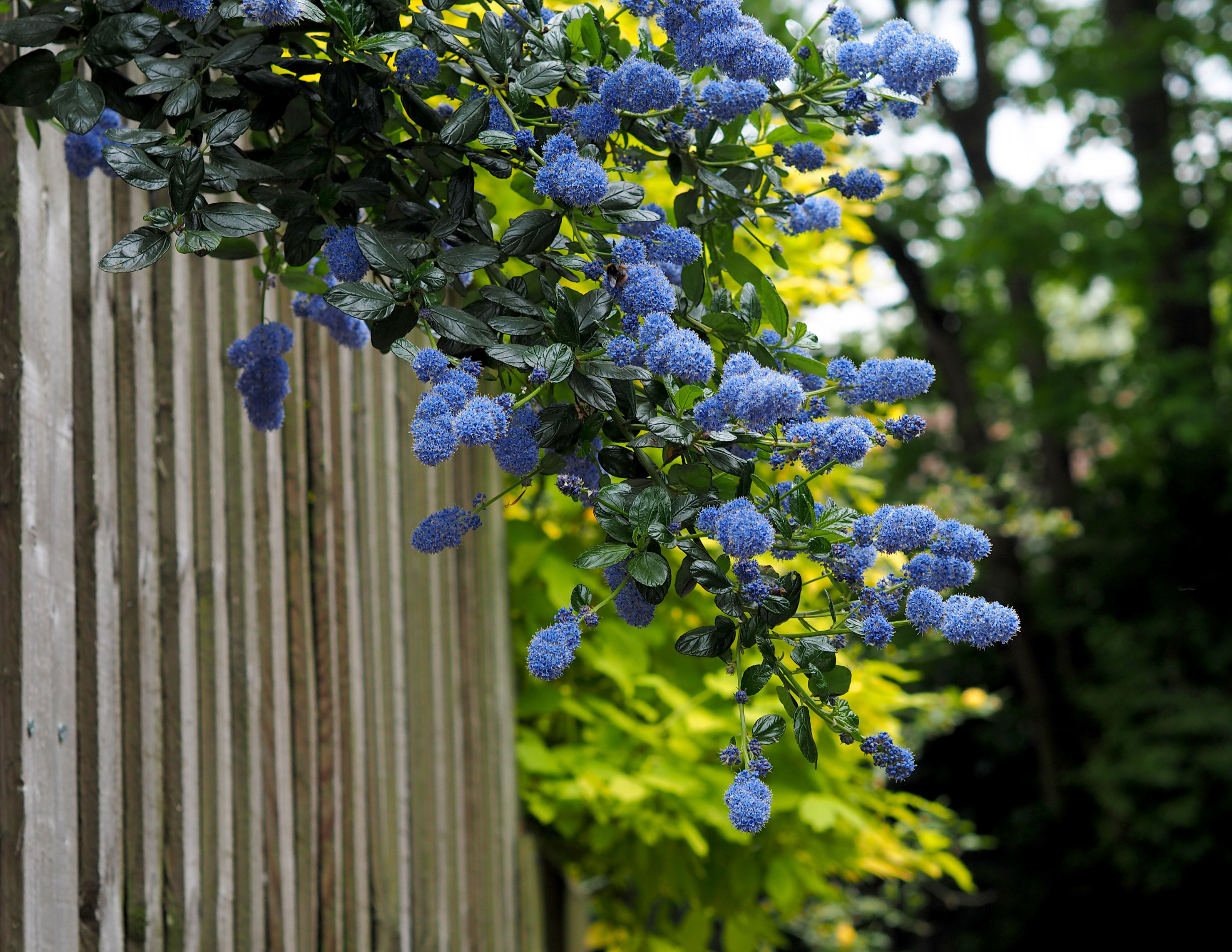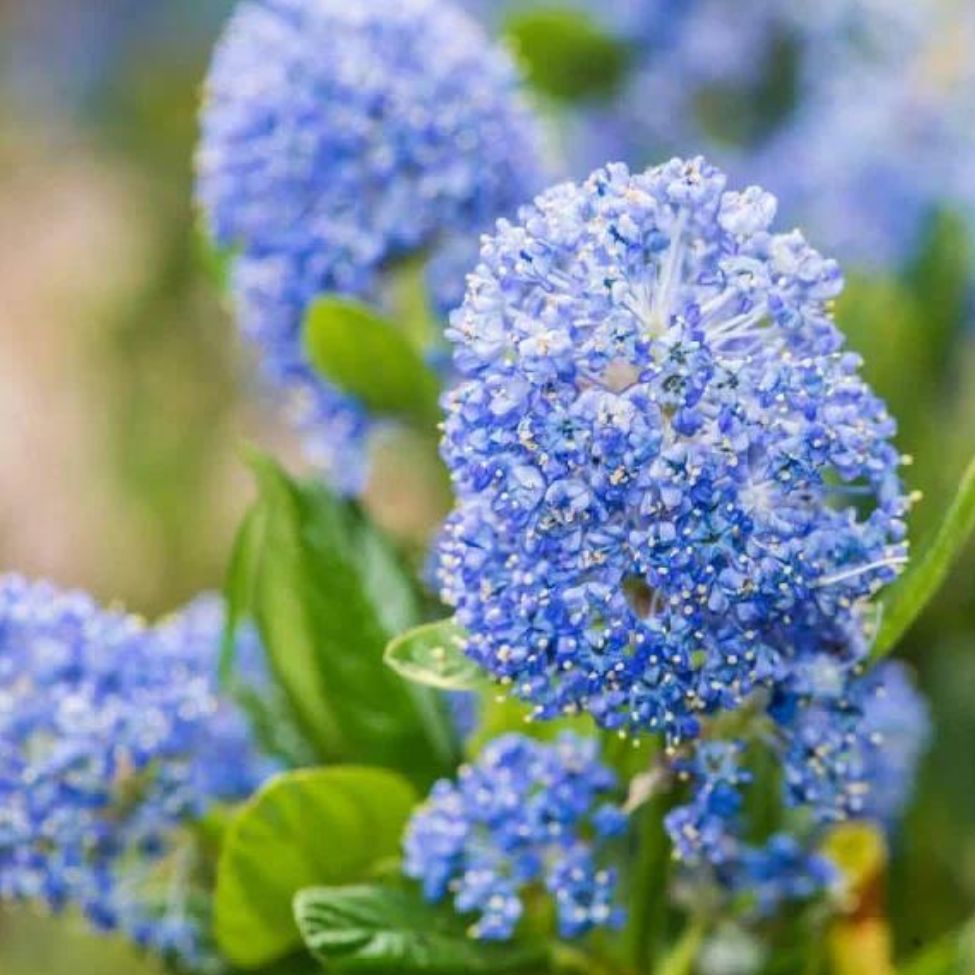This Trending Plant Adds Beautiful Color to Your Yard — And Makes for a Surprisingly Good Privacy Hedge, too
Channel laidback California style by choosing this low-maintenance plant, while creating privacy, bringing color and introducing flowers that bees love


Do you ever see a pretty plant and wonder: "what is that?" I'm usually one to whip out my phone to make use of a plant identifier app, but with the bright blue flowering tree I've recently been fascinated sitting in the front yard of a neighbor I don't know very well, I've been a little reticent to start pointing my phone camera at their house.
Fortunately, my TikTok algorithm has come to my rescue, and it seems that these pretty, colorful trees are in fact ceanothus, also known as "California Lilac". And it's not just me who has taken notice of them. All over my social feeds this plant is making waves as we enter prime gardening season, and there's plenty of reasons to love it.
'I love California lilac. It's a super easy plant to grow,' says Marek Bowers, founder at Bolder Green and a sustainable landscaping expert. 'It's an evergreen shrub with bright to light blue flowers that thrives on the US west coast.'
However, despite its name, it's not a plant that's only limited to a Californian climates, so one you can consider to bring not only its color, but some other great qualities to your yard as a flower that blooms in summer.
Why is this plant trending?
You might recognize this plant from your bucket list. That is, at certain points, it's possible to visit locations in California where rolling hills are filled with ceanothus, and plenty of people make the journey to see it in person.
These plants (you might be interested to know they're not actually part of the lilac family) bloom from early spring in March, but some later-flowering cultivars will last through to Mother's Day.
However, it's also proving popular with gardeners as a way to introduce color and structure to flower beds, especially as it is relatively low maintenance. Plus, it has some other benefits, too.
The Livingetc newsletters are your inside source for what’s shaping interiors now - and what’s next. Discover trend forecasts, smart style ideas, and curated shopping inspiration that brings design to life. Subscribe today and stay ahead of the curve.
'For gardeners who have concerns about their soil health and have traditionally used chemical fertilizers, California lilac can be used to fix the nitrogen balance organically,' says Marek. 'This makes it a perfect plan for use in a sustainable and eco-friendly garden.'
The pretty blue flowers also attract birds, alongside beneficial insects, and is even one of the best flowers for hummingbirds.
How easy is California Lilac to grow?

As you might expect for a plant that thrives in a Californian climate, ceanothus does well with only a limited water supply. 'As far as watering requirements, it's drought tolerant and would thrive on a twice-weekly drip system,' Marek tells me of this perfect plant for a dry garden.
Even better, once this plant has grown into its own in your yard, it needs even less attention. 'This drought-tolerant shrub requires minimal irrigation once established,' says Jana McDaniel, founder of ecofriendly garden pesticide alternative First Saturday Lime. 'Water deeply every 2-3 weeks during the summer, allowing the soil to dry out slightly between waterings. Prune lightly after blooming to maintain shape and encourage bushier growth,' she adds, but you'll get away without pruning this plant at all, too.
There are plenty of different cultivars, all of which have slightly different looks, characteristics and maintenance requirements.
Where should I plant it?
It's low maintenance nature doesn't preclude you from getting the right location for this plant in your yard. 'Because of its drought tolerant nature, gardeners should place the shrub in well-draining soil under full sun,' Marek says.
'It's best planted in a spot with good air circulation, as it's prone to fungal diseases in humid conditions,' adds Jana. 'Incorporate some compost or well-aged manure into the planting hole for added nutrients.'
When it comes to how you use this plant in a yard's landscaping design, these experts have some suggestions, too. 'Personally, I'd use it either as a ground cover in its low-lying form or as a privacy hedge. As a privacy hedge, it would just need pruning at the tips,' Marek says.
'With its mounding habit and vibrant blooms, California Lilac makes an excellent focal point in dry, Mediterranean gardens,' Jana suggests. 'Plant it as a stunning hedge, accent plant, or in mixed borders alongside drought-resistant companions like lavender, rosemary, and ornamental grasses. Its evergreen foliage provides year-round interest,' she says.
How tall do California lilacs get?
Size matters, especially if you've got a small backyard, but ceanothus plants won't overtake any space that isn't tiny. 'California Lilac can reach 6-10 feet tall and wide,' Jana says — something that Marek agrees on.
Does ceanothus smell?
If you're looking for a plant to bring a beautiful scent to your yard, this is a great choice during its flowering season. 'Its clusters of small, blue-purple flowers emit a light, pleasant fragrance in late spring to early summer,' Jana tells me.

Hugh is Livingetc.com’s editor. With 8 years in the interiors industry under his belt, he has the nose for what people want to know about re-decorating their homes. He prides himself as an expert trend forecaster, visiting design fairs, showrooms and keeping an eye out for emerging designers to hone his eye. He joined Livingetc back in 2022 as a content editor, as a long-time reader of the print magazine, before becoming its online editor. Hugh has previously spent time as an editor for a kitchen and bathroom magazine, and has written for “hands-on” home brands such as Homebuilding & Renovating and Grand Designs magazine, so his knowledge of what it takes to create a home goes beyond the surface, too. Though not a trained interior designer, Hugh has cut his design teeth by managing several major interior design projects to date, each for private clients. He's also a keen DIYer — he's done everything from laying his own patio and building an integrated cooker hood from scratch, to undertaking plenty of creative IKEA hacks to help achieve the luxurious look he loves in design, when his budget doesn't always stretch that far.


